Updated: 15-Jun-2021
General Electric arose in 1892 from a merger between Edison General Electric Company and Thomson-Houston Electric Company.
During WWI, GE began its first activities for aviation through its turbochargers to supercharge aero engines.
As a result of American General Arnold's decision, NACA appoints three engine companies: Westinghouse, Allis Chalmers and General Electric (G.E.) to develop gas turbines for aircraft.
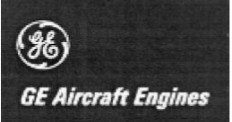
“Logo”
-General Electric already supplied turbines for patrol and torpedo boats, as well as turbochargers for piston engines.
-Returning to earlier times, at the beginning rather, General Electric made turbochargers as shown in the following illustration, where it is installed on the front of a Liberty and in which we can see a special intercooler formed by various ducts to the carburetor intakes.

“Liberty with GE turbocharger” (at the NASM)

“Whittle I-A”
-By agreements between the US and English governments, in 1941, G.E. receives a Whittle W-1 type I engine, a W-1X, and blueprints for the W-2B.
-The W-1X is the one manufactured by BTH, not being able to fly. GE starts to work on the slightly modified I-A so it more resembled the W-2B, and was installed on a Bell P-59A.
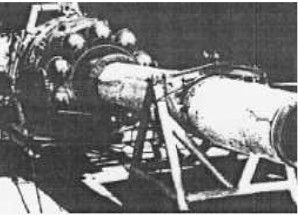
“W-2B”
-This was the first turbojet built in the USA. The 1st flight was made on October 2, 1942.

“Bell P-59A”
-This was the first successful engine of GE. The project that GE was working on at the time of the designation by the general, was a turboprop that became known as TG-100.
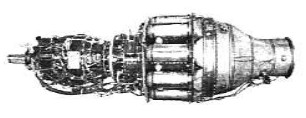
“TG-100”
-Two versions were made, a pure jet, the J-31-3, that had a centrifugal compressor and delivered 1,600 lbf. of thrust at 16,500 rpm. Later that was installed on the rear of a Fireball fuselage. The front engine was piston.

“Ryan Fireball”
-The other version was the XT-31-3 turboprop with denomination TG-100B within GE.

“XT-31”
-The T-31 was the first North American turboprop to make a flight on December 21, 1945. It gave 2,300 SHP to the propeller at 13,100 rpm at that day.

“TG-100B, T-31”
--It was also installed on a Corvair XP-81, together with a J-33 at the rear.
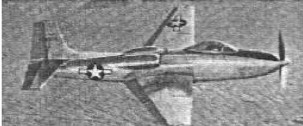
“XP-81”
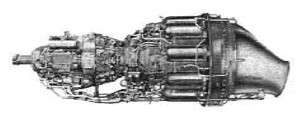
“TG-100”
-In the previous illustration we see the exhaust gas nozzle tilted down as it was on the XP-81.
-Returning the story, in the same year 1942, work begins on the I-14 with 1400 lbf of thrust. It was similar to the W2 / 500, with few differences.
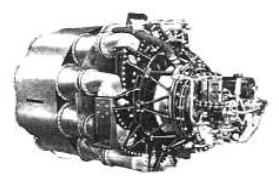
“I-16”
-The I-16 engine, which already had the military designation of J-31, gave 1,600 lbf. The I-18 gave 1,800 lbf. of thrust and the I-20 delivered 2,000 lbf.
-The I-40 engine with 4000 lbf of thrust turned out to be the J-33, and of which GE passed the production responsibility to Allison.
-Below we see some pictures of this engine.
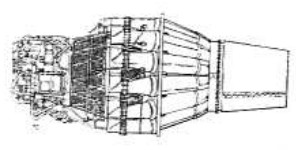

“GE-Allison, J-33”
-The J-33 was mounted on the first American generation jet aircraft, the F-80, T-33 as well as 50% of the Grumman Panther fighters.
-The P-83 plane, an improved version of the P-59, was also powered by the J-33 engine, which was called I-40 by GE.
-The TG-110 and the twin TG-120 continued to be developed, but they did not come into production.
-We now arrive to another important GE engine, the TG-180 that was known as J-35 and from which a preserie was manufactured immediately.
-Initially Chevrolet was asigned to manufacture it, but mass production was again passed to Allison.
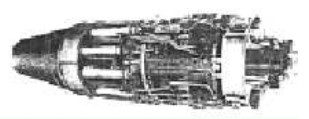
“TG-180”
-The J-36 turbine was a copy of the British DH Goblin.
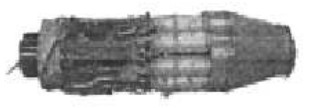
“TG-190”
-The TG-190, or Super J-35, as it was known, received the official designation of J-47. Coinciding with the Korean War, a massive production of this engine was made.
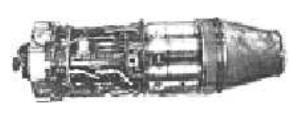
“J-47-GE-23”
-They were manufactured by General Electric, Studebaker and Packard.
-For example, an engine manufactured by General Electric had the letters GE between the designation and the model: J-47-GE-23. If it was Studebaker: J-47-ST-23.
-The version with afterburner, logically longer, was the J-47 that was installed on the famous Sabre F-86 and on the SAC B-47, mainly.
-In total, more than 36,000 J-47 engines were manufactured. The development of these engines was constant, the J-47 gave way to the J-73 (a J-47-21) for the Saber F86H.
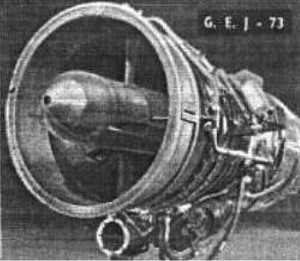
“J-73”
-In those days, GE was commissioned to build a turbine of greater size and power than the existing ones, which resulted in the XJ-53, capable of 1.8 Mach. This gave a huge jump to almost 18,000 lbf. of thrust, increasing to 21,000 lbf with afterburning.
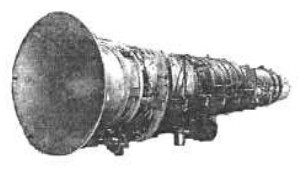
“XJ-53”
-The J-77 passed by unnoticed, but the J-79 did not. This was an important successor engine of the GOL-1590, which we have seen on the F-104 Starfighter, B-58, Phantoms, Rangers, etc.
-It has been manufactured under license in other countries, especially in Europe.
-They were supersonic engines with axial flow and afterburner.
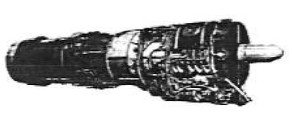
“GE J-79”
-It had a 17-stage compressor, being the first 7 variable incidence stators.
-The combustion chamber is cannular (mixed combination between annular and separate chambers) and has 10 injectors. The turbine has 3 stages.
-There were interesting oher projects at this time, such as those of running turbojets on atomic energy.

“HTRE-3”
-General Electric illuminated projects such as the HTRE-3 with two modified J-47 engines, in which the air was derived from the compressor to the nuclear reactor and returned hot to the engine turbine.
-It could work for a long time, in fact in the 1960's tests, it made one of 65 hrs. of continuous operation.
-Another project was the X-211. The engines planned for this program were the XJ-87. Working with atomic energy (U-235 moderated by hybrid Zirconium) and in which materials such as beryllium oxide and different ceramics were tested. We see in the image a model of the assembly.
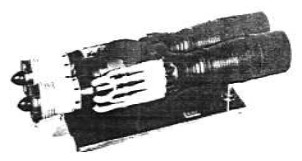
“A X-211 scale model”
-And a real photograph of the twin XJ-87 engines in the X-211 project.
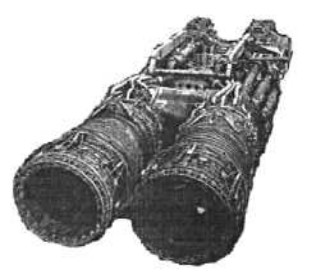
“X-211”
-The J-79, started from a project called GOL-1590, a line of engines that was different from the others of the brand's engines.
--At the same time there was an industrial and marine production line that was based on the J-79. They were the LM engines: LM-1000, LM-1500 and LM-2500.
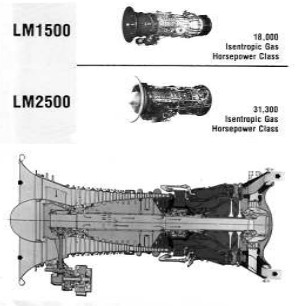
“LM engines and an LM-2500 cross-section”
-The LM-2500 is for marine use. In the diagram we see that it has an important compressor, and its first seven stages are also variables.
-The civil turbojet engine, a variant of the J-79, was the CJ-805 that is shown below in its -3 version.
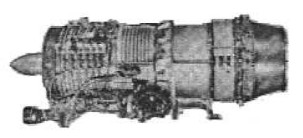
“CJ-805”
-It was used on the Convair 880 passenger plane able to fly at 990 Km/hr. A later version of the CJ-805 was the turbofan (-23).
-In this case the turbo's fan is in the rear: a free turbine is just behind the main engine's gas outlet, taking advantage of the jet, and spinning.
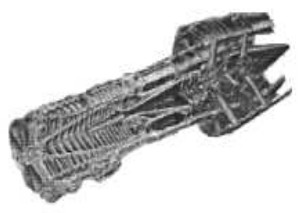
“CJ-805-23”
-On its periphery another crown of vanes, but pulling, is mounted and attached to said turbine, rotating the whole as a free wheel. It was installed on the Convair "Coronado" CV-990.
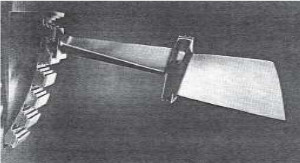
“Double vane"
-General Electric had the production of engines divided between two main plants, that of Evendale and that of Lynn, sharing the production load.
-As an indication we can say that the CF-6, F-101, J-79, TF-39, CJ-805-3, CF-45, CF-50 were built in Evendale and the CJ-610, CF- 700, CT7/T-700, T-64/CT-64, T-58/CT-58, CJ-805-23, CF-34, J-85, F-404 were made in Lynn.

“T-58”
-The letter "C" indicates "Commercial", for civil use, so the T-700 has its CT-700 version.
-The T-58 is a well-known turboshaft engine manufactured by British De Haviland under the name of Gnome, also by the IHI of Japan and Alfa Romeo of Italy.

“CT-58”
-The T-58 has been widely used in helicopters (Sikorsky S-61 or Vertol 107) in single and double assemblies. The civil version is CT-58.
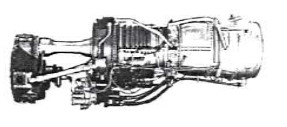
“T-64, turboshaft”
-The T-64, military, used as turboprops or turboshafts, gave between 4,380 and 4,750 SHP.
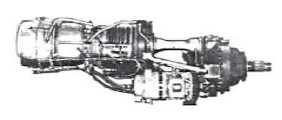
“T-64, turboprop”
-They have a transmission by shaft to the gearboxes that can be accommodated at other levels than the engines.
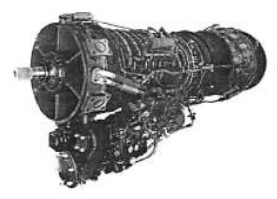
“T-64”
-These engines have been mounted on the Sikorsky, CH, S-80, etc. and on CT-64 and DH-5 aircraft.

“GLC-38”
-The GLC-38 turboshaft, military T-407, is intended for the Boeing CH-47 helicopter.
-It is the base for the CFE-738 and the UDF (UnDucted Fan) families. Its operation began in the early 1990's.

“GE-27”
-The GE-27 is another turboshaft, in the order of 5,000 SHP, with a mixed axial-centrifugal compressor, an annular combustion chamber, and a three-stage turbine.
-And also the start engine of the GE27 and GE38 series depending on whether it is turbo-diesel or turboprop respectively.
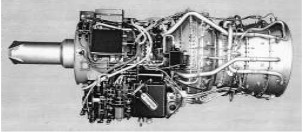
“General Electric GE27/GE38”
-They were planned for the Bell-Boeing Osprey V-22, a tiltwing, vertical takeoff aircraft.
-The GE-36 is the UDF, UnDucted Fan, or multiple propeller in sight, a Fan without being "piped" by the hull of the engine cowling.

“GE-36-UDF”
-The two propellers with their multiple blades are contra-rotating.
-Finally with the F-404 Core it was tested on the MD-80
-The propellers are driven in the same way as the fan in the CJ-805-23.
-Now we deepen a little more in the UDF (UnDucted Fan) engine tests.
-It was a concept of free turbines that drove contra-rotating propellers at the outlet of the engine gases.
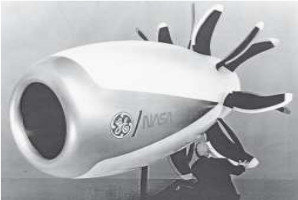
“General Electric/NASA UDF”
-The studies were initiated jointly with NASA and the construction was carried out by GE and Snecma.

“UDF installed onboard”
-And on the port side of a McDonnell-Douglas.
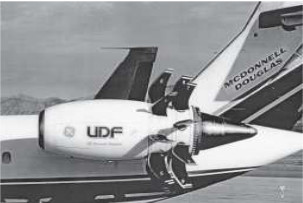
“On a MD-, during tests”
-If these tests happened some tens of years ago, and today we do not see this engine concept installed (if we exclude those that the propellers are in a puller position), it is because they did not improve performances and did not compensate the increase in manufacturing cost.
-The UDF concept was that of free turbines. As has been said, they were contra-rotating and as we can see the blades were special with a "scimitar" shape.
-We should add the thrust provided by the exhaust of the turbine.
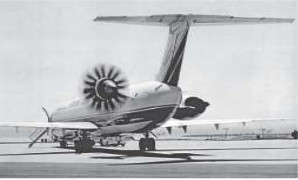
“UDF on a DC-9"
-The flight tests were done on this plane, with the UDF installed only on the left side and keeping the usual engine on the right side.
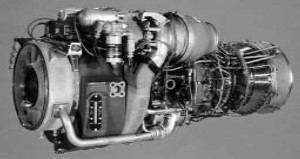
“T-700”
-Another turboprop-turboshaft, between 1,500 and 2,000 shp is the T-700 (and CT-700). They were developed in the 70's and power the known military "Black Hawk" helicopters and others such as Apache, Supercobra, Seahawk, etc. . The T-700 is a derivative of the GE-12.
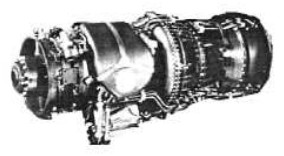
“GE-12”
-Made under license by Alfa Romeo Avio (with participation of Fiat Aviazione) and Rustan Gas Turbines in the United Kingdom.
-The T-700 is a helicopter engine of the armored type, smoke free and nearly without noise for extreme military use.
-The CT-7 is the commercial turbine based on the T-700, also from the 70's and with similar powers. Alfa Romeo and Fiat also intervened in its development, to install it on Eurohelicopters.
-But a well-known application for us is that of the Casa-Nurtanio C-235 (with powers between 1,600 and 2,000 shp) depending on the version.

“CT-7”
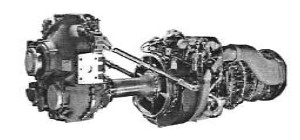
"CT-7 assembly"
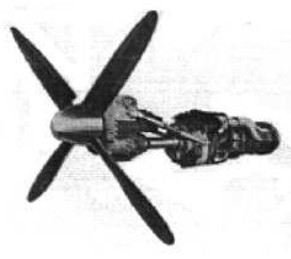
“PCT-7 powerplant”
-The gearbox can be moved conveniently according to the installation on board.
-We now offer an exploded view by CT-7 modules.

“CT-7 modules”
-The GE-37 engine is an F-120 designed for advanced tactical fighters, with contra-rotating turbine and vector exhaust. It acts as a pure turbojet engine at supersonic speeds, while running as an efficient turbofan at subsonic speeds.
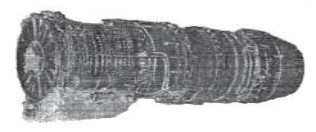
“J-93”
-But before going to the most advanced turbines, we should treat the J-93, the engine that equipped the latest versions of aircraft such as the Valkyria (B-70) that began its journey with the J-79.
-The J-93 operates more efficiently at speeds of Mach 3, thus giving greater range and height.
-It was constructed with alloys that were resistant to higher temperatures and to withstand such efforts.
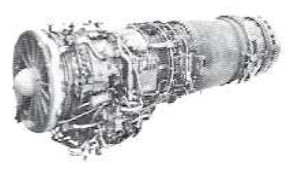
“J-85”
-The J-85 is a pure turbojet that we have seen in the Northrop F-5 (and T-38) initially with 1,750 Kgf of thrust although there are more powerful versions with afterburner.
-Originally designated MX-2273, it was evolving in the GE "Small Aircraft Engines" department.
-The first test was done in 1958. It was supersonic with high performance, small and lightweight.
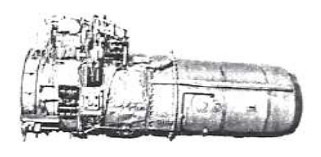
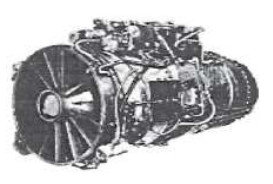
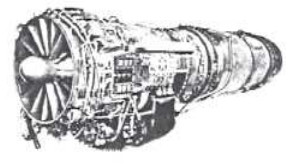
“3 J-85 engines”
-The GE-1 that was of advanced technology (in its day) served as the basis for the F-100 and F-400 series engines. The GE-1/10 is a derivative version.

“GE-1/10”
-From this family, the GE-4/5JP was intended for the Boeing 2707-300 SST. It was said in its time that it was the most powerful engine ever built.
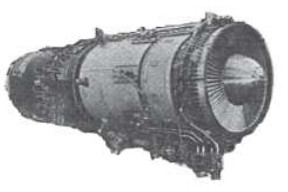
“GE-1/10”
-This engine gave almost 70,000 lbf. of thrust, equivalent to 330,000 hp at almost 3 Mach. Finally the American SST was stranded. This engine was a mixture of a GE-1 and a J-93.
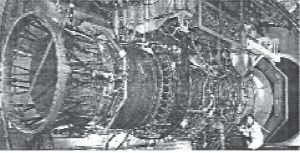
“GE-4/5JP”
-The J-97 was a light turbojet, directly derived from the GE-1 as well. It was not put into production, but its experiences and components have gone to the TF-39 and F-101.
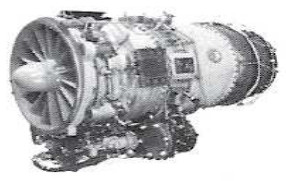
“CJ-610”
-The CJ-610 came out as part of the J-85 success, developed from this engine and aimed at light commercial, taxi and executives aircraft.
-CJ-610 applications include the "Jet Commander", "Lear Jet" and "Hansa Jet" aircraft.
-From the CJ-610 derives the CF-700 turbofan version that was selected for the Fan Jet Falcon aircraft.
-The CF-700 also used the J-85 core.

“CF-700”
-The Fan at the rear was like the one in the CJ-805-23, that is to say, that it takes advantage of the impulse of the gas jet, placing a turbine in it and a crown of blades in its periphery. The power was in the category of 4,300 Lbf.

“CF-700”
-The military de-specification was TF-700.
-The JTF-22 was a turbofan that was intended for the air superiority F-14B aircraft.
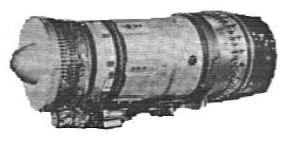
“JTF-22”
-The CF-34 is a high "By-pass" turbofan engine, in the range of 9,000 lbf. which is ideal for large executive aircraft or regional airlines.
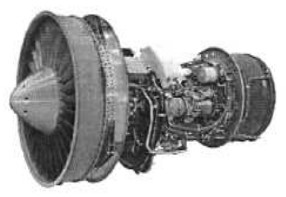
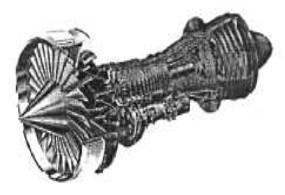
“CF-34, in view and cutaway”
-The -1A certification program began in 1982 flying in a Challenger 60.
-It had an axial compressor and variable stators, annular combustion chamber and two shafts: HP and LP.
-The gas generator shaft (HP), had a two-stage turbine and the fan (LP) had four stages in the turbine.
-The TF-34 was the military one.
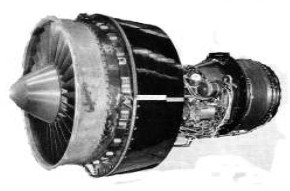
“TF-34”
-The technology of this engine came from the CF-39 (and TF-39). It was in the range of 18 tons of thrust, around 41,000 lbf.
-Around 1990, the GE-90 was announced by GE as an engine that delivered from 75,000 to 95,000 lbs.
-Huge engine and huge power for the Boeing 777.
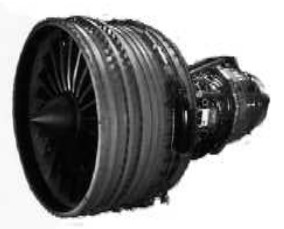
“GE-90"
-In 1995 the -76B came out with 76,000 lbs. of thrust, reaching the 90,000 lbs, in 1997 with the -90B series.
-The -115B version is intended to increase the range. The curvature of the leading and marginal edges of the fan blades has a very characteristic shape.
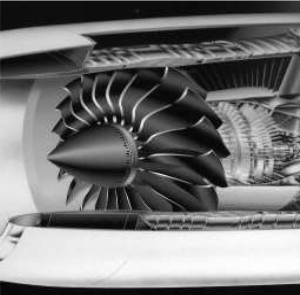
“GE-90 fan”
-The CF-6 starts in 1967, its military designation the F-103. It was installed on the DC-10, KC-10 and Boeing E-4, in its first version (-50C2).
-The CF-6-80A version was the first to receive FAA certification to operate 180 EROPS (or ETOPS) minutes.

“CF-6”
-The -80A1/A3 versions went to the Airbus 310.
-In the -80C2 several signatures intervened for their progress, apart from the GE itself: Volvo, Snecma, RR, MTU and Fiat.
-In the order of 62,000 lbf. of thrust and has powered the Airbus 310, the 300-600, the A-330, the Boeing B-767, B-747-200 and -300 and the MD-11.

“F-101”
-In the field of military engines of recent decades, we have the F-101 turbofan, 30,000 lbf. of thrust with afterburner, destined to the bomber B-1 that entered service in 1984.
-From the F-101 there is the DFE (Divertive Fighter Engine) version. It has also been installed in some F-16s.
-For a comparison between a Starfighter F-104 engine, the J-79 and the current F-101 (do not confuse the F = Fighter aircraft series, with the "F" engines US Military), we see the difference in size revealing of two different epochs of combat aviation.

“J-79 and F-101”
-The F-103 was the military version of the CF-6.
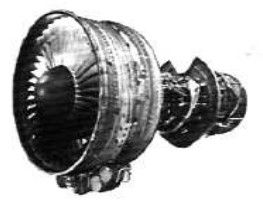
“F-103”
-The F-108 engine is the military version for the CFM-56-2 (see Snecma / GE).
-F-110 engines went to the F-16, F-14 and F-15 aircraft with a thrust of 29,000 lbf.
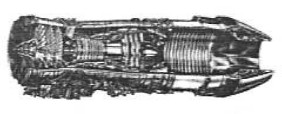
“F-110”
-It has a three-stage fan, a 9-stage compressor and a 1-stage cooled HP turbine. The LP turbine has two stages without cooling. The combustion chamber is annular.
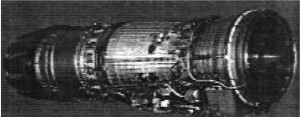
“F-110”
-The F-110-GE-129 version was IPE or Increased Engine Performance with greater tolerance to high temperatures in its materials in addition to the FADEC: Full Authority Digital Engine Control.
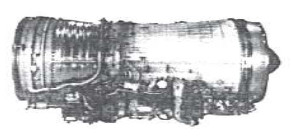
“F-118”
-The F-118 is mounted on hundreds of U-2 and on the B-2A bomber. Without afterburning it gives 19,000 lbf. of thust.
-The F-120 is the GE-37 that we have already discussed before.
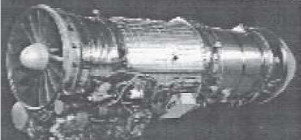
“F-404”
-From the 400 series of GE engines, the F-404 is the most important of them for its application, powering the F/A -18 and F-5G. In the order of 17,000 lbf of thrust. It is also built in Sweden for the JAS-39 Grippen, such as F-404/RM-12, with 18,000 lbs.
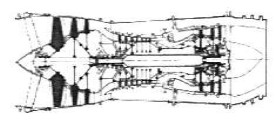
“F-412”
-The F-412, with parts of the F-110 IPE, is considered a Stealth engine.
-Another engine of appreciated success is the F-414 that delivered 14,000 lbf. of dry thrust and 22,000 lb. with afterburner, destined for the F/A-18 E/F.
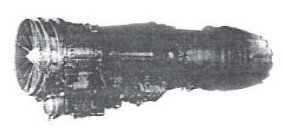
“F-414”
-Below, as a partial summary, we present the schematic cross-sections of some of the main engines presented so far.
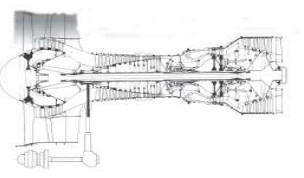
“CF6-45/50”

“CF6-80C2”
-The CF34's military version, TF34, is used on the Lockheed S-3A and Fairchild A-10, the Canadair Challenger and RJ100.
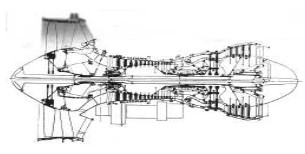
“GE CF34-3A/3B”
-The one in the image gives 41 kN. The CF34-8 version reaches 60 kN. IHI and MHI were participating in its construction and these engines were destined to the Canadair DRJ, F-Dornier 728jet and the Embraer ERJ-170.
-Ready to mention the collaborations with other companies, the CFE738 was built by GE jointly with Honeywell (ASE = Allied Signal Engines). It delivers 26 kN.
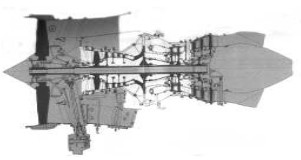
“CFE738”
-The military F101-GE-100 series with 133 kN was destined for the B1-A / B, and was a derivative of the GE-9.
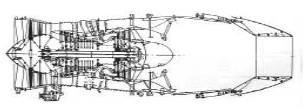
“GE, F101-GE-102”
-The F110-GE-100/400, with 129 kN are installed on the F-16 and F-14.
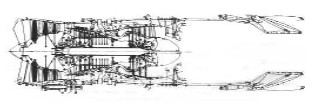
“F110-GE-129”
--It uses the same HP core as the civil CFM-56. The F118 is derived from the F110 with a new fan and without afterburner. It is destined for the B2 bomber.
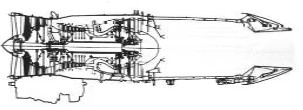
“F404-GE-402”
-The F404 have been built by GE and by P & W, of 78 kN. For F-18, X-29, X-31, F-117. Volvo builds them under license as RM12 for the Grippen.

“F414”
-The F414 with afterburner is derived from the F404 and F412, and delivers 98 kN.

“J-79”
-The veteran J-79 (on Phantom and Starfighter) resists the attacks from new engines.
-It has a thrust of 83 kN and is considered single-body, single-flow jet engine with afterburning.
-They have been manufactured under license by Orenda in Canada, IHI in Japan, MTU in Germany, Fiat and Alfa Romeo in Italy, as well as in Israel.
-The TF39 was derived from the GE 1/6 demonstrator at the beginning of the CF6 development. The TF39 gave 190 kN of thrust.

“Differences between CF6-50 and TF39”
-The small lion of GE, the J-85 was mounted on the F-5 and on the Cessna A-37. With afterburner they had a thrust in the order of 22 kN.

“J-85”
-Civil derivatives were the CF-700 with a fan at the rear and the CJ-610 without afterburner.
-Many times, even being engines of the same family or type, they are very different from each other, both in construction and in performances.
-The CF6-40/50 gives 230 kN and is made by GE. The -80C2 reaches 270 kN and is made jointly with Snecma, MTU, Fiat and Volvo. The same as the E1 version.
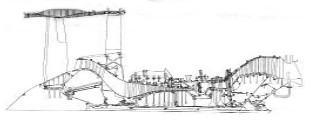
“GE90 half cross-section”
The GE90 are in the range of 350 to 410 kN.
-General Electric has also tested with rocket engines, such as the X-405H running on liquid propellants. This engine gave 12250 Kgf of thrust for 142 seconds. It was manufactured for the first stage of the Vanguard launch vehicle. See end of this chapter.

“Lift / Ryan”
-Other interesting projects were the studies on vertical takeoff, in collaboration with Ryan Aeronautical.
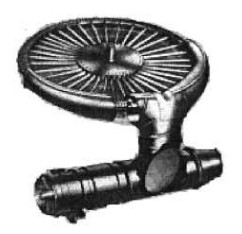
“Lift / J-85”
-Another system was to use lift turboprops that were based on the J-85.
-General Electric did R & D tests with ionic motors that had thrusts of only a few hectograms, enough for space flights with small vehicles. These tests were based on the electrostatic acceleration of a mass composed of cesium ions.
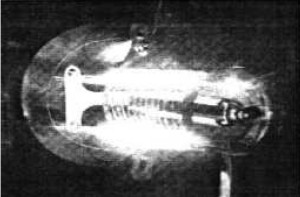
“Ionic engine”
-Before coming to the collaborations, we treat General Electric's latest projects for the new "air-giants", which are the GENX and the GP-7000 (Joint project with P & W).
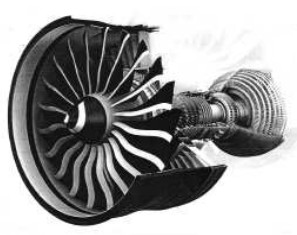
“GEnx engine”
-It is a direct development from the GE-90 and designed as a direct take-over for the important CF-6, a great success of General Electric.
-Its fan has a colossal diameter of 2.82 meters and with advanced design blades.
-It has a special combustion chamber, newly designed, baptized as TAPS or Twin Annular Premixed Swilers, which keeps the temperatures more uniform inside the combustion chamber and reduces pollutant emissions. Maintenance is reduced to maximum as we are dealing with a modular engine.

“GP-7000”
-The GP-7000 engine is the series head of a family with thrusts as from 70,000 pounds. For certain A-380 aircraft (depending on customers). It is built in collaboration with Pratt & Whitney.
-The GP 7000 range is very wide and in general the last two figures indicate the power in thousands of pounds as with the GP 7277 that delivers 77,000 pounds of thrust, (see P & W).
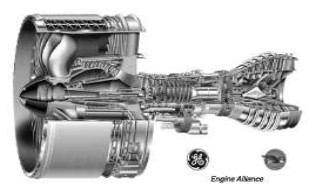
“GP-7277”
-In collaboration with Rolls-Royce for the JSF F-35 program they developed the F-136 engine. While moving forward with this aircraft, it is planned that the engine assembly will be divided with the mentioned F-136 and the Pratt & Whitney F-135.
-A F-136 variant is the one that operates as Lift/Fan for STOVL. An F-136 engine did performance tests in 2004 at Evendale. Subsequent news points out that the program with the F-136 has been canceled by the Department of US Defense leaving only P & W.

“F-404 / RM-12”
-Another GE collaboration has been with Volvo Flygmotor for its RM-12 based on the F-404.
-Con la Garrett, el CFE-738 de 5600 lbs de empuje (basado en el GE27 y en el Garrett TFE-731). El compresor de 6 escalones axiales y uno centrífugo, cámara anular directa y dos turbinas HP con tres turbinas LP.
With Garrett, they developed the CFE-738 with 5600 lbs of thrust (based on the GE27 and the Garrett TFE-731). The compressor has 6 axial stages and one centrifugal, a direct annular chamber and two HP turbines with three LP turbines.
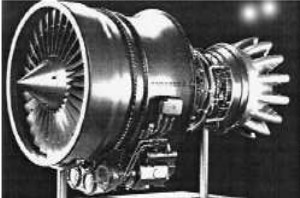
“CFE-738”
-In France, GE collaborates with Snecma in the joint company CFM to manufacture the CFM-562, -3 and -5 engines. This engines are used to replace engines on old aircraft such as the KC-135R and C-135F, the DC-8 Series 70 or the B-737-300.
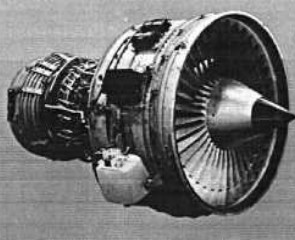
“CFM-56”
-The CFM-56 is mainly mounted on the Airbus 300 series and Boeing 737 as from the 300 series.
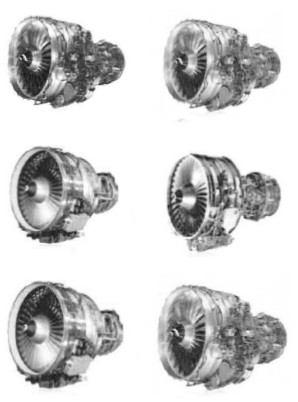
"From top to bottom the CFM56 made in collaboration with
Snecma, SAFRAN, 7B / 5B / 5C / 5A / 3 and 2 "
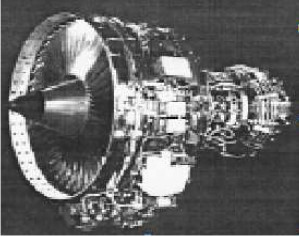
“CFM-56”
-La General Electric colabora con Italia también, con Alfa Romeo Avio y con la Fiat Aviazione (hoy Fiat Avio).
General Electric also collaborates in Italy with Alfa Romeo Avio and Fiat Aviazione (today Avio).

“Alfa and Fiat logos”
-Returning to the topic of rocket engines, between 1957 and 1959 GE made the X-405 with liquid oxygen and kerosene delivering 13,700 Kgf. of thrust for the Vanguard. At least 11 launches were made. In the first stage of the Vanguard the LR-50-GE-1 was used as well.
--Another engine was the X-430 with LF2/LH2 that gave 34,000 Kgf. of thrust.(1960's) It was considered high energy, but with very toxic fuels, that is why it did not prosper.
-But General Electric's start in rockets began with the projects brought from Germany after World War II.
-They made the engines for the first Hermes and Blossom missiles, based on the V-2, increasing the power of the engines little by little, just as the Russians did, before coming to their own projects.
-As we see in the figure of the rocket engine, the similarity with that of the V-2 is total, but we observe varied attachments. Here, the fuel inlets to the bottom of the nozzle appear completely to cool it while flowing up through the double wall to the combustor injectors.
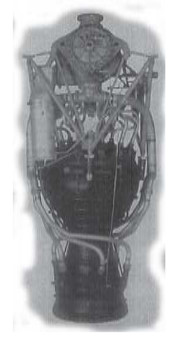
“GE, V-2 type engine”
-GE entered in the Bumper project through the "Jet Propulsion Laboratory". This project was already a rocket with two stages, the first one being a copy of the V-2 and the second a WAC Corporal. In this case is the Bumper 2 launched from Cape Canaveral, Florida.
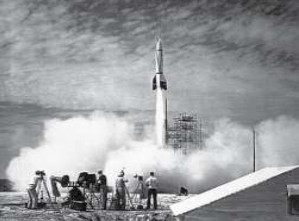
“Bumper 2 launch”
From Appendix 6: General Electric was and is a well-known brand of mechanical and electrical construction in general.
-In the 1920's it already made turbochargers for engines of other existing brands.
-Like the one installed on the Conqueror engine and Curtiss fighter (Hawk). We see it pointed by the pilot who tested it at Wright Field.

“GE turbocharger”
-From the experience with turbines like the previous one and the generation of electricity with hydraulic or steam turbines, they could more easily design and build turbines for aviation such as the turboprop with heat recovery shown below. (See main text also ).
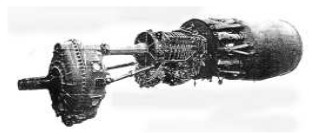
“General Electric turboprop”
-General Electric made the J-93 at the beginning of the 1960's to reach Mach 3. Like the one shown below.
-Running on exotic fuels such as boron, it was bound for aircraft such as the F-108 or the "bizarre" machine, the SR-71.

“El YJ93-3”
-A collaborator has sent us an interesting photograph of the J-85 without and with afterburner, which we reproduce below.

“Two GE J-85 engines”
-And a cross-section for the turbofan CFE-738.

“GE CFE-738 cross-section”
-For the North American B-2 Stealth bomber, General Electric delivered the F-118 engines.
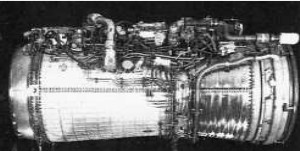
“F-118 for the B-2”
-General Electric in its facet of construction of rocket engines made the X-405 for the first stage of the Vanguard.
-It was the first launcher rocket for the Explorer 1 satellite. It had a modified Redstone engine in 1958.

“General Electric X-405”
-We have obtained some illustrations of the F-412 mentioned in the main text. A cross-section of the engine and the Stealth A-12 Avenger II aircraft that has it installed. Itdelivers about 13,000 lbf. of thrust.

"General Electric F-412 for the Stealth A-12"
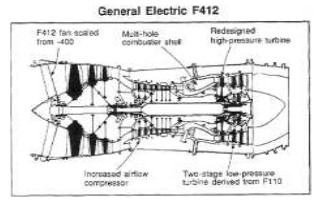
“F-412 cross-section”
-We now have a better view of the turboprop TG-100 with an indication of the main elements.
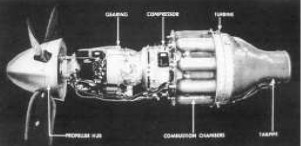
“General Electric TG-100”
-The turbojet version of the same turbine was the TG-180. We show a gondola including two of these engines next to a main landing gear leg on a Consolidated Vultee XB-46 aircraft where they were to be installed. The combined thrust of these turbines was 8,000 lbf.
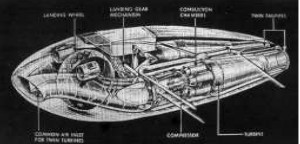
"Two TG-180 engines united in a single gondola"
Continues in part 2
Engines of G.E. (Part 1)
Model: CF-34 (TF-34)
Arquitecture: Turbofan
Compressor/s:
Combustion chambers:
Turbines:
Power / Thrust:
Weight:

"GE, CF-34"
Model: CF-6 (F103)
Arquitecture: Turbofan
Compressor/s:
Combustion chambers:
Turbines:
Power / Thrust:
Weight:
CF6-6
Compressor: Fan & 1 LP stage and 16 HP stages.
Turbine: 2 HP stages y 5 LP stages.
CF6-50 and CF6-80A
Compressor: Fan & 3 LP stages and 14 HP stages.
Turbine: 2 HP stages y 4 LP stages.
CF6-80C2 and CF6-80E1
Compressor: Fan & 4 LP stages and 14 HP stages.
Turbine: 2 HP stages y 5 LP stages.

"GE, F-103"
Model: CF-700 (TF-700)
Arquitecture:
Compressor/s:
Combustion chambers:
Turbines:
Power / Thrust:
Weight:

"GE, CF-700 (TF-700) fig. 2"
Model: CFE-738 (co-op. Honeywell)
Arquitecture: Turbofan
Compressor/s:
Combustion chambers:
Turbines:
Power / Thrust:
Weight:

"General Electric CFE-738"
Model: CFM-56
Arquitecture:
Compressor/s:
Combustion chambers:
Turbines:
Power / Thrust: / ---
Weight:

"General Electric CFM-56"
Model: CJ-610
Arquitecture: Turbojet
Compressor/s: 8-stage, axial-flow compressor
Combustion chambers:
Turbines: 2-stage turbine
Power / Thrust: --- / 2850 Lbf
Weight: 396

"CJ-610"
Model: CJ-805
Arquitecture: Turbojet
Compressor/s: 17 stage axial flow
Combustion chambers: Can-anular combustion chamber
Turbines:
Power / Thrust: --- / 11650 Lbf
Weight: 3213 Lb

"GE CJ-805"
Model: CT-7
Arquitecture: Turboshaft
Compressor/s:
Combustion chambers:
Turbines:
Power / Thrust:
Weight:

"CT-7"
Model: F-101
Arquitecture: Turbofan
Compressor/s: Axial flow. 2-stage fan, 9-stage HP compressor
Combustion chambers: Annular combustion chamber
Turbines: 1-stage HP turbine and 2-stage LP turbine
Power / Thrust: --- / 17390 Lbf
Weight: 4400 Lb
With afterburner

"GE, F-101"
Model: F-108 (CFM-56-2)
Arquitecture: Turbofan
Compressor/s:
Combustion chambers:
Turbines:
Power / Thrust:
Weight:
Model: F-110 (GE-129)
Arquitecture: Turbofan
Compressor/s: 3-stage fan, 9-stage compressor
Combustion chambers: Annular combustion chamber
Turbines: 1-stage HP cooled turbine and 2-stage LP turbine without cooling.
Power / Thrust:
Weight:
Model: F-118
Arquitecture: Turbofan
Compressor/s: Axial flow. 1-stage fan, 2-stage LP compressor, 9-stage HP compressor
Combustion chambers: Annular combustion chamber
Turbines: 1-stage HP turbine and 2-stage LP turbine
Power / Thrust: --- / 19000 Lbf
Weight: 3200 Lb

"GE F-118"
Model: F-120 (GE-37)
Arquitecture: Turbojet
Compressor/s:
Combustion chambers:
Turbines:
Power / Thrust:
Weight:
It acts as a pure turbojet engine at supersonic speeds, while running as an efficient turbofan at subsonic speeds.
Model: F-404 (GE-402)
Arquitecture: Turbofan
Compressor/s: Axial flow. 3-stage fan and 7-stage compressor
Combustion chambers: Annular combustion chamber
Turbines: 1-stage HP turbine and 1-stage LP turbine
Power / Thrust: --- / 11000 Lbf
Weight: 2282 Lb
Thrust without afterburner: 11,000 lbf.
Thrust with afterburner: 17,700 lbf.

"F-404 / RM-12"
Model: F-412
Arquitecture: Turbofan
Compressor/s:
Combustion chambers:
Turbines:
Power / Thrust:
Weight:
F404 version without afterburner.

"General Electric F-412 for Stealth A-12"
Model: F-414
Arquitecture:
Compressor/s: Axial flow. 3-stage fan and 7-stage compressor
Combustion chambers: Annular combustion chamber
Turbines: 1-stage HP turbine and 1-stage LP turbine
Power / Thrust: --- / 13000 Lbf
Weight: 2445 Lb
Thrust without afterburner: 13,000 lbf.
Thrust with afterburner: 22,000 lbf.

"GE F-414"
Model: GE 4/5 JP
Arquitecture: Turbojet
Compressor/s: 9-stage compressor, axial flow
Combustion chambers: Annular combustion chamber
Turbines: 2-stage turbine, axial flow
Power / Thrust: --- / 50000 Lbf
Weight: 11300 Lb

"GE-4/5JP"
Model: GE-1-10
Arquitecture:
Compressor/s:
Combustion chambers:
Turbines:
Power / Thrust:
Weight:

"GE-1/10"
Model: GE-12
Arquitecture: Turboshaft
Compressor/s:
Combustion chambers:
Turbines:
Power / Thrust:
Weight:

"GE-12"
Model: GE-27
Arquitecture: Turboshaft
Compressor/s: mixed axial-centrifugal compressor
Combustion chambers: Annular combustion chamber
Turbines: 3-stage turbine
Power / Thrust: 5000SHP / ---
Weight:

"GE-27"
Model: GE-3000
Arquitecture:
Compressor/s:
Combustion chambers:
Turbines:
Power / Thrust: / ---
Weight:
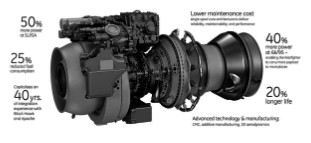
"General Electric GE-3000"
Model: GE-36
Arquitecture:
Compressor/s:
Combustion chambers:
Turbines:
Power / Thrust: / ---
Weight:

"GE-36-UDF"
Model: GE-90
Arquitecture: Turbofan
Compressor/s: 1 fan, 3-stage LP, 10-stage HP
Combustion chambers:
Turbines: 2-stage HP, 6-stage LP
Power / Thrust:
Weight:

"GE-90"
Model: GE-I-A
Arquitecture: Turbojet
Compressor/s: Single-stage double-sided centrifugal compressor
Combustion chambers: 10 reverse-flow canular combustion chambers
Turbines: Single-stage axial turbine
Power / Thrust: --- / 1250 Lbf
Weight: 780 Lb
Model: GLC-38 (T-407)
Arquitecture: Turboprop
Compressor/s:
Combustion chambers:
Turbines:
Power / Thrust:
Weight:

"GE GLC-38"
Model: GOL-1590, (J-79)
Arquitecture:
Compressor/s:
Combustion chambers:
Turbines:
Power / Thrust: / ---
Weight:
Model: GP-7000 series (con PW)
Arquitecture:
Compressor/s:
Combustion chambers:
Turbines:
Power / Thrust: / ---
Weight:

"GE, GP-7000"
Model: Hermes A-1
Arquitecture:
Compressor/s:
Combustion chambers:
Turbines:
Power / Thrust: / ---
Weight:
Model: Hermes A-3A
Arquitecture:
Compressor/s:
Combustion chambers:
Turbines:
Power / Thrust: / ---
Weight:
Model: Hermes A-3B
Arquitecture:
Compressor/s:
Combustion chambers:
Turbines:
Power / Thrust: / ---
Weight:
Model: HTRE nuclear, (based 2xJ47)
Arquitecture:
Compressor/s:
Combustion chambers:
Turbines:
Power / Thrust: / ---
Weight:

"GE HTRE-3"
Model: J-31 (I-16)
Arquitecture: Turbojet
Compressor/s: Single-stage double-sided centrifugal compressor
Combustion chambers: 10 reverse-flow canular combustion chambers
Turbines: Single stage axial turbine
Power / Thrust: --- / 1600 Lbf
Weight: 850 Lb

"GE I-16 (J-31)"
Model: J-33 (I-40)
Arquitecture: Turbojet
Compressor/s: Single-stage double-sided centrifugal compressor
Combustion chambers: 14 can type combustion chambers
Turbines: single-stage axial turbine
Power / Thrust: --- / 4600 Lbf
Weight: 1820 Lb

"GE-Allison, J-33"
Model: J-35 (TG-180)
Arquitecture: Turbojet
Compressor/s: 11-stage axial-flow compressor
Combustion chambers: 8 tubular inter-connected combustion chambers
Turbines: single-stage axial turbine
Power / Thrust: --- / 5600 Lbf
Weight:
Thrust without afterburner: 5,600 lbf.
Thrust with afterburner: 7,400 lbf.

"GE TG-180 (J-35)"
Model: J-47
Arquitecture:
Compressor/s:
Combustion chambers:
Turbines:
Power / Thrust: / ---
Weight:

"J-47-GE-23"
Model: J-47 (TG-190)
Arquitecture: Turbojet
Compressor/s:
Combustion chambers:
Turbines:
Power / Thrust:
Weight:

"GE TG-190 (Super J-35)"
Model: J-73 (J-47-21)
Arquitecture: Turbojet
Compressor/s: 12-stage axial flow compressor
Combustion chambers: 10 cannular combustion chambers
Turbines: 2-stage turbine
Power / Thrust: --- / 9500 Lbf
Weight: 3650 Lb

"GE J-73"
Model: J-77
Arquitecture:
Compressor/s:
Combustion chambers:
Turbines:
Power / Thrust: / ---
Weight:
Model: J-79
Arquitecture: Turbojet
Compressor/s: single-spool 17-stage axxial compressor
Combustion chambers: Cannular combustion chambers
Turbines: 3-stage turbine
Power / Thrust: --- / 11905 Lbf
Weight: 3850 Lb

"GE J-79"
Model: J-85
Arquitecture: Turbojet
Compressor/s: 8 or 9-stage compressor (according to model)
Combustion chambers: Annular combustion chamber
Turbines: 2-stage turbine
Power / Thrust: --- / 2850 Lbf
Weight: 396 Lb

"GE J-85"
Model: J-87
Arquitecture:
Compressor/s:
Combustion chambers:
Turbines:
Power / Thrust: / ---
Weight:
Model: J-93
Arquitecture: Turbojet
Compressor/s: 11-stage axial-flow compressor
Combustion chambers: Annular combustion chamber
Turbines: 2-stage turbine, axial flow
Power / Thrust: --- / 22000 Lbf
Weight: 5000 Lb

"GE J-93"
Model: JTF-22
Arquitecture:
Compressor/s:
Combustion chambers:
Turbines:
Power / Thrust: / ---
Weight:

"GE, JTF-22"
Model: LM-1000 (J-79 base)
Arquitecture:
Compressor/s:
Combustion chambers:
Turbines:
Power / Thrust: / ---
Weight:
Model: LM-1500
Arquitecture:
Compressor/s:
Combustion chambers:
Turbines:
Power / Thrust: / ---
Weight:
Model: LM-2500
Arquitecture:
Compressor/s:
Combustion chambers:
Turbines:
Power / Thrust: / ---
Weight:

"General Electric LM-2500"
Model: LR-50-GE-1
Arquitecture:
Compressor/s:
Combustion chambers:
Turbines:
Power / Thrust: / ---
Weight:
Model: T-408 (GE38-1B)
Arquitecture: Turboprop
Compressor/s: 5 axial stages and 1 centrifugal stage
Combustion chambers:
Turbines: 3-stage power turbine, 2-stage single-sided HP turbine
Power / Thrust: 7500SHP / ---
Weight: 1105 Lb
Turboprop and turboshaft versions.
Model: T-58 (CT-58)
Arquitecture: Turboshaft
Compressor/s: 10-stage axial flow with variable incidence stators in first 3 stages
Combustion chambers: Annular combustion chamber
Turbines: 2 gas generator turbine stages and 1 free power turbine stage
Power / Thrust: 1250HP / ---
Weight:

"GE CT-58"
Model: T-64 (CT-64)
Arquitecture: Turboshaft
Compressor/s: 14-stage high-pressure compressor. Axial flow
Combustion chambers: Annular combustion chamber
Turbines: Axial flow, 2-stage HP turbine, 2-stage LP turbine
Power / Thrust: 4330HP / ---
Weight: 720 Lb

"GE T-64"
Model: T-700 (CT-700)
Arquitecture: Turboshaft
Compressor/s: 6-stage axial, 5-stage axial, 1 stage centrifugal
Combustion chambers: Annular combustors
Turbines: 2-stage gas generator and 2-stage power turbine
Power / Thrust: 1536SHP / ---
Weight: 400 Lb
Powers vary between models from 1,536 shp to 2,638 shp.

"GE T-700"
Model: T-901
Arquitecture:
Compressor/s:
Combustion chambers:
Turbines:
Power / Thrust: / ---
Weight:
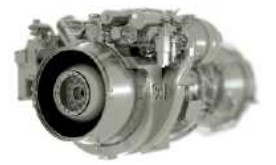
"GE T-901 with several 3D printed parts"
Model: TF-700
Arquitecture:
Compressor/s:
Combustion chambers:
Turbines:
Power / Thrust: / ---
Weight:
Model: TG-100
Arquitecture: Turboprop
Compressor/s:
Combustion chambers:
Turbines:
Power / Thrust:
Weight:

"GE TG-100"
Model: X-211 (2xJ87) nuclear
Arquitecture:
Compressor/s:
Combustion chambers:
Turbines:
Power / Thrust:
Weight:

"GE X-211"
Model: X-405, -H, motor cohete
Arquitecture:
Chambers:
Fuels:
Feed System:
Ignition:
Thrust:
Weight:

"General Electric X-405"
Model: X-430
Arquitecture:
Chambers:
Fuels:
Feed System:
Ignition:
Thrust:
Weight:
Model: XJ-53
Arquitecture:
Compressor/s:
Combustion chambers:
Turbines:
Power / Thrust: / ---
Weight:

"GE XJ-53"
Model: XT-31, T31 (TG-100B)
Arquitecture: Turboprop
Compressor/s: 14 axial stages
Combustion chambers: 8 cannular combustors
Turbines: single-stage axial turbine
Power / Thrust: 2300SHP / ---
Weight: 1980 Lb

"GE XT-31"
Model: YJ-93
Arquitecture: Turbojet
Compressor/s:
Combustion chambers:
Turbines:
Power / Thrust:
Weight:
With afterburner.

"General Electric YJ93-3"


